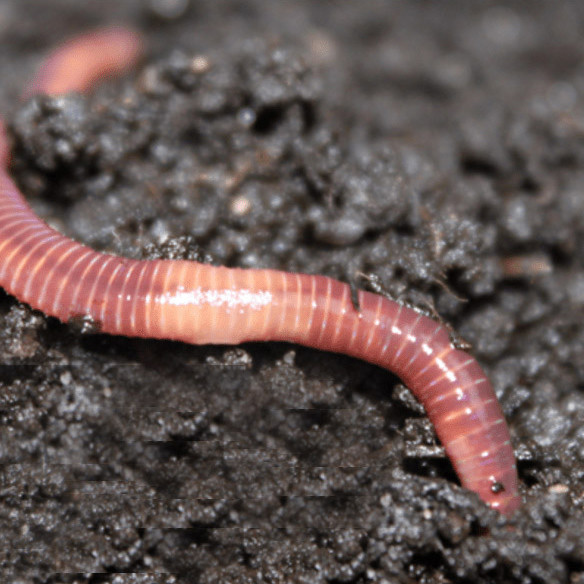Strong red worms: Transform organic waste
Using Red Wigglers for Reliable Organic Waste Disposal
Making use of red wigglers for organic garbage disposal presents an engaging strategy to managing food scraps while promoting ecological sustainability. These worms not just boost waste decomposition but also yield valuable worm spreadings, which can considerably improve dirt health. Their ability to refine large quantities of organic material with marginal initiative placements them as an available remedy for homes and neighborhoods alike. Understanding the nuances of setting up an effective worm container and keeping an optimum environment is important for maximizing their benefits. The next steps in this process might surprise you.
Advantages of Making Use Of Red Wigglers
One of the most compelling benefits of utilizing red wigglers for natural garbage disposal is their remarkable efficiency in composting. These worms, scientifically understood as Eisenia fetida, are especially adjusted for damaging down natural products, allowing them to refine waste approximately twice their body weight each day. This rapid decomposition not only accelerates the composting process but also produces nutrient-rich worm castings that considerably improve soil quality.
Additionally, red wigglers add to a decrease in landfill waste. By drawing away natural products from garbage dumps, they assist reduce methane emissions-- a potent greenhouse gas. This ecological advantage is crucial in the fight versus environment modification.
Furthermore, red wigglers are low-maintenance and can flourish in various environments, making them accessible for both novice and seasoned composters. Their capacity to replicate rapidly makes certain a constant populace, promoting continuous waste processing.
Establishing Your Worm Container
Producing an efficient worm bin is crucial for optimizing the advantages of composting with red wigglers. Ensure the bin has sufficient drainage openings to avoid excess wetness, as red wigglers thrive in a moist but not soggy environment.
(NC Worm Farms)Next, prepare the bed linen product, which works as the worms' environment and food resource. Shredded newspaper, cardboard, and coconut coir are outstanding choices. Go for a bed linens deepness of about 4 to 6 inches. The container ought to be placed in a dark, temperature-controlled area, preferably between 55 ° F and 77 ° F, to maintain worm task.
When the bin is established up, present the red wigglers, allowing them to accustom to their new setting. A well-kept container will not only sustain the health and wellness of the worms however additionally promote reliable decomposition of natural waste.
(red wiggler fishing worms)
What to Feed Red Wigglers
An understanding of the ideal diet plan for red wigglers is important for keeping a healthy and balanced worm population and enhancing composting effectiveness. Red wigglers flourish on a varied diet regimen that go right here largely includes organic materials. Ideal food resources include vegetable scraps, fruit peels, coffee grounds, eggshells, and shredded paper. These products not only provide vital nutrients however also add to the dampness balance within the worm container.
It is critical to stay clear of certain foods that can hurt the worm populace. Red wigglers must not be fed meat, milk products, oily foods, or refined items, as these can draw in pests and produce unpleasant odors. red wigglers. In addition, citrus fruits and zesty foods ought to be decreased, as their level of acidity can be damaging to worms
Checking the worm bin for food usage prices will certainly aid ensure that red wigglers are receiving a sufficient diet regimen while keeping an efficient composting atmosphere. Appropriate feeding practices are vital for promoting a prospering community within the worm container.
Maintaining Your Worm Environment
A well-kept worm environment is necessary for the wellness and productivity of red wigglers. To guarantee ideal problems, it is crucial to check temperature level, wetness, and oygenation within the worm container (red wigglers).
Wetness levels should be maintained consistent; the bed linen should be wet yet not soaked. A great general rule is to preserve dampness at around 70% to 80%. If the bedding ends up being too wet, it can cause anaerobic problems that are unsafe to the worms. Including dry carbon-rich materials, such as shredded paper or cardboard, can help absorb excess dampness.

Making Use Of Worm Castings in Gardening
Rich in nutrients and beneficial bacteria, worm spreadings act as an exceptional natural plant food for gardening. Created through the digestive procedures of red wigglers, these castings have a selection of necessary nutrients, consisting of nitrogen, phosphorus, and potassium, which promote robust plant growth. Unlike artificial fertilizers, worm castings supply a slow-release mechanism, ensuring that nutrients are readily available to plants over an extended duration, thereby minimizing the threat of nutrient leaching and dirt depletion.
In enhancement to vitamins and mineral material, worm castings improve soil structure and aeration, boosting wetness retention and water drainage. The microbial life existing in worm castings assists to reduce pathogens and promotes a healthy soil environment, more benefiting plant health and wellness. When integrated into the soil or made use of as a leading clothing, worm castings can substantially enhance seed germination rates, root advancement, and overall plant vitality.
For optimum results, gardeners should use worm castings at a price of 1-2 inches per square foot, blending them right into the dirt or including them right into potting blends. On the whole, making use of worm castings is an eco-friendly technique to enhancing dirt fertility and making sure flourishing garden atmospheres.
Conclusion
